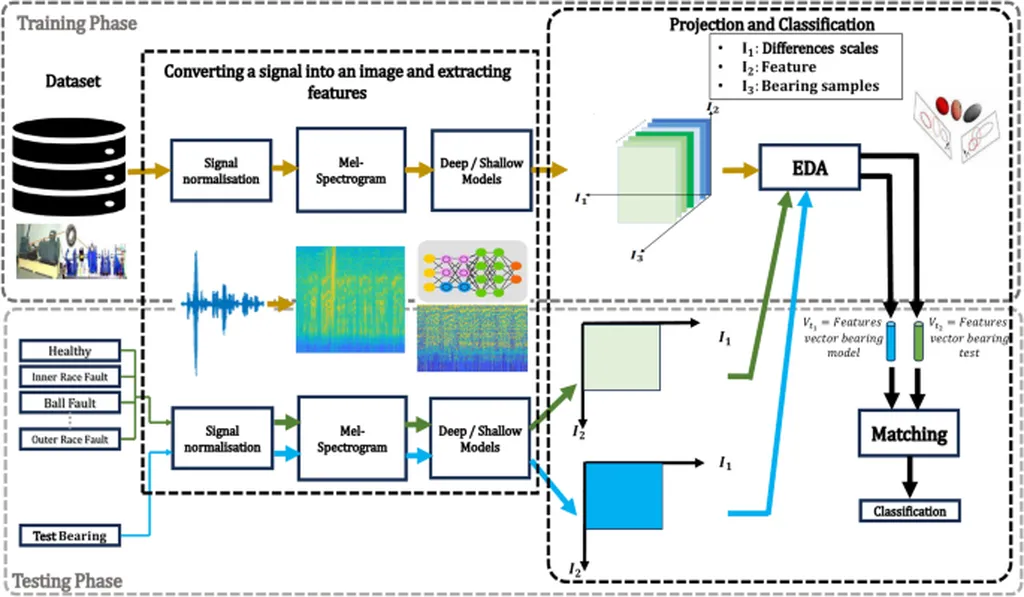In the heart of industrial operations, where the hum of machinery is constant and the stakes are high, a new breakthrough in bearing fault diagnosis could be a game-changer. Researchers have developed a model that promises to enhance the reliability of fault detection in rolling bearings, crucial components in large-scale rotating machinery like wind power gearboxes and aviation engines. This advancement, published in the journal Physical Review Letters Open (PLoS ONE), could significantly reduce maintenance costs and improve production efficiency in the energy sector.
The lead author, Weilin Cao, and his team have introduced a multi-domain collaborative denoising diagnostic model that leverages a dynamic inter-domain attention mechanism and a noise-aware loss function. This model extracts high-dimensional features from multiple domains, such as time and frequency, to suppress noise interference effectively. “The dynamic inter-domain attention mechanism allows the model to distinguish the importance of information in different signal domains and flexibly integrate them,” Cao explains. This flexibility is crucial in industrial settings where noise can often mask the true signals of bearing faults.
One of the standout features of this model is its ability to perform accurately even in extreme noise environments. Experimental results on publicly available datasets, CWRU and MFPT, showed that the model achieved fault diagnosis accuracies of 81.25% and 76.36% respectively, even with a signal-to-noise ratio (SNR) of -10 dB. These results outperform most existing mainstream denoising models, offering a robust solution for real-world industrial applications.
The implications for the energy sector are substantial. Wind power gearboxes, for instance, are subjected to intense operational conditions that can lead to bearing faults. Timely and accurate diagnosis of these faults can prevent catastrophic failures, reduce downtime, and save millions in maintenance costs. “This model provides a new idea for intelligent bearing fault diagnosis in real industrial scenarios,” Cao notes, highlighting its potential to revolutionize predictive maintenance strategies.
The research also opens up new avenues for future developments in the field. As Weilin Cao and his team continue to refine their model, the potential for integrating artificial intelligence into industrial diagnostics becomes increasingly promising. This could lead to smarter, more efficient machinery that can self-diagnose and even predict faults before they occur, ultimately enhancing the reliability and efficiency of energy production.
In a world where industrial machinery is the backbone of energy production, this breakthrough offers a beacon of hope for more reliable, cost-effective, and efficient operations. As the energy sector continues to evolve, the integration of advanced diagnostic tools like this model will be crucial in meeting the demands of a rapidly changing industry.

